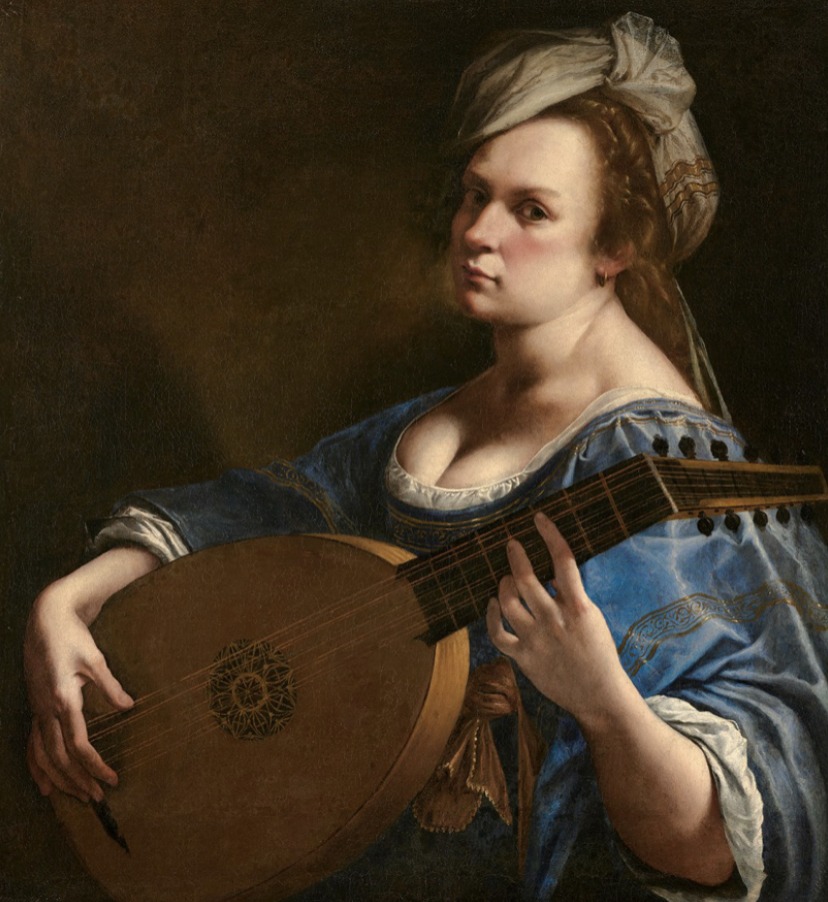Artemisia Gentileschi exhibition and forgotten women artists
In regards to galleries and museums, what upset me the most with the announcement of the second lockdown was the diminishing chance of me being able to go see the Artemisia Gentileschi exhibition at the National Gallery in London, which had already been delayed by six months due to Covid-19 restrictions. Thankfully I was able to vicariously experience the exhibition through the new BBC Four show, Inside Museums, where in the latest episode, the art historian and curator Katy Hessel was able to give us a behind the scenes look at the blockbuster exhibition while it was still open.
The narrative of the exhibition is really empowering in the way it presents Artemisia as a woman who fought back at the male violence in the world surrounding her through the power of painting
The narrative of the exhibition is really empowering in the way it presents Artemisia as a woman who fought back at the male violence in the world surrounding her through the power of painting. Artemisia would often use the same subject matter of history painting like her male counterparts of the 17th-century Baroque age, but what made her depictions so unique is how she would portray the female characters in her scenes. We see this in her depictions of scenes from the Book of Judith in the Old Testament of the Bible. Her most well-known painting showing this is Judith beheading Holofernes (1612-13), which is painted so skilfully, and she was presumed to only be in her late teens when she painted this. She subverts the typical depictions of Judith by portraying her as a strong woman, capable of an act as brutal and violent as murder. Which is also emphasised by her dramatic use of light and dark (chiaroscuro) inspired by her contemporary, Caravaggio. She revisits these themes throughout her whole career, always seeming to bring something new with each rendition, highlighting her versatility as an artist.
Some may argue this was a form of catharsis for her violent rape by fellow artist Agostini Tassi, which she never truly got justice for as although he was convicted and found guilty, the verdict was later annulled. The transcripts of her trial are on display in the exhibition, drawing attention to the pages where her testimony extracted torture to prove that she was telling the truth. The rediscovery of these trial papers, among the Women’s Art Movement in the 1970s, led to Artemisia being regarded as a proto-feminist icon. Furthermore, her work was celebrated in the 1976 exhibition, Women Artists: 1550-1950, which was co-curated by art historian Linda Nochlin, a pioneer of the Feminist Art Movement.
Artemisia also overcame the limitations put on her as a woman living in Italy in the 1600s. In its 50-year history, Artemisia was the first woman to join the Academy of the Arts of Drawing, which is extraordinary when you consider the fact that women were not allowed to partake in life drawing classes in most academic art institutions until the 19th century. She strongly sought to be considered on par with her male counterparts, believing herself to have “the spirit of Caesar and the soul of woman”.
Through the exhibition we discover her determination to be a successful painter and how this challenged traditional gender roles. Artemisia’s time living in Florence, as an artist, was spent not only taking on the patronage of wealthy families to support her unemployed husband, but she also spent almost all of this period either pregnant or raising her young children.
Artemisia’s long overdue recognition signals the developments and changes that art institutions need to be making towards the representation and recognition of women in art
In the National Gallery’s 196-year history, this is the first major exhibition centred around a female painter. In fact, of the National Gallery’s 2,300 works in their collection, only 23 are by female artists. Artemisia’s long overdue recognition signals the developments and changes that art institutions need to be making towards the representation and recognition of women in art. Although it is amazing to see such a ground-breaking artist come back into light after falling into obscurity for centuries, galleries must not fall into the trap of cherry picking female artists from periods and movements in art, presenting them as if they are the few exceptions to a predominantly male art history. It is crucial to acknowledge the institutional problems that have prevented women from becoming and being written in history as the ‘genius artist’ that male artists, varying from Michelangelo to Picasso, are so often portrayed to be.
For those, like myself, who most likely will not be able to go see the exhibition when it finally re-opens in December, or if you just want to know more about the thought process that went into its curation, then episode four of Inside Museums, which focuses on the Artemisia show, is still currently available to watch on BBC iPlayer. You may also recognise the presenter of this episode from her Instagram page or podcast of the same name, “The Great Women Artists“ (@thegreatwomenartists), which celebrates female artists from a variety of backgrounds – here you can also find an interview with the curator of Artemisia, Letizia Treves.

Comments